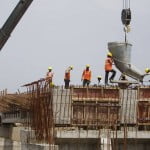
Though the World Bank in its latest India Development Update has maintained the country’s GDP growth estimate at 7.5 per cent for the current financial year, it has sounded cautious about the country’s growth prospects in the medium term given “slowdown in global demand and heightened volatility”.
According to World Bank, “While the growth will likely remain above 7 per cent in the next fiscal year, uncertainty about its momentum is high and downside risk ample.”
The update further says that though in the near term the country is relatively well-positioned to weather the global volatility, in the medium term the country’s economy is not immune to a slowdown in global demand and heightened volatility.
The World Bank expects the country’s GDP to grow at 7.5 per cent in 2015/16, at 7.8 per cent in 2016/17 and 7.9 per cent in 2017/18. However, it says that the stated growth rate can be achieved only if growth rate in investment picks up to 8.8 per cent during 2015/16 and 2017/18.
Onno Ruhl, World Bank’s Country Director in India, says that though the new government has shown improvement in many areas, some of the reforms including implementation of Goods and Services Tax (GST) are key for the country to grow at a higher rate.
The report expresses concerns about India’s falling exports. It says that China’s slowdown has further deteriorated India’s already weak export outlook. “Although India may be able to achieve fast GDP growth without exports growth for a short period, sustaining high rates of GDP growth over longer period will require a recovery of export growth,” says the report.
The report says that the country has benefitted from the sharp decline in global oil and commodity prices and used this to eliminate petrol and diesel subsidies. Lower subsidy cost and higher taxes have helped the country bring down its fiscal deficit, observed the report.
However, it throws in a caveat saying that oil prices are unlikely to fall further, and therefore, the government may face challenges in reducing deficits beyond 2015/16. The government has a target of keeping the fiscal deficit at 3.9 per cent for 2015/16 and bringing it down to 3 per cent by 2017/18.
Another key concern area that the report highlighted is that of falling asset quality of the banks.
“The poor and deteriorating asset-quality of public sector banks is the biggest challenge facing the financial sector and a drag on credit growth,” observes the report.
Federico Gil Sander, Senior Country Economist and task team leader of India Development Update, says that public sector banks, which account for three-fourths of domestic credit, are under stress with a rising share of non-performing assets. Service sector crucial
While Prime Minister Narendra Modi’s renewed focus on ‘reviving’ the manufacturing sector in India has received global attention, World Bank thinks the country has an edge (over other countries) in the service sector, and it cannot ignore this sector if it wants to create one million jobs a month.
Onno Ruhl of World Bank says that while efforts to increase the manufacturing sector’s contribution to GDP is good, the government should not forget that India has achieved a certain level of excellence in the service sector, and that the sector remains crucial for job creation.
“The time when China and other South East Asian countries achieved success in manufacturing was different from the time that India is trying to achieve same level of manufacturing success. Today both the services sector as well as manufacturing sector have changed, and it is wrong to expect same level of success in manufacturing now,” says Ruhl.
He added that when China was scaling its manufacturing capabilities, internet was not there. “Internet has made the services sector very crucial for job creation, says Ruhl.
[“source-businesstoday”]




